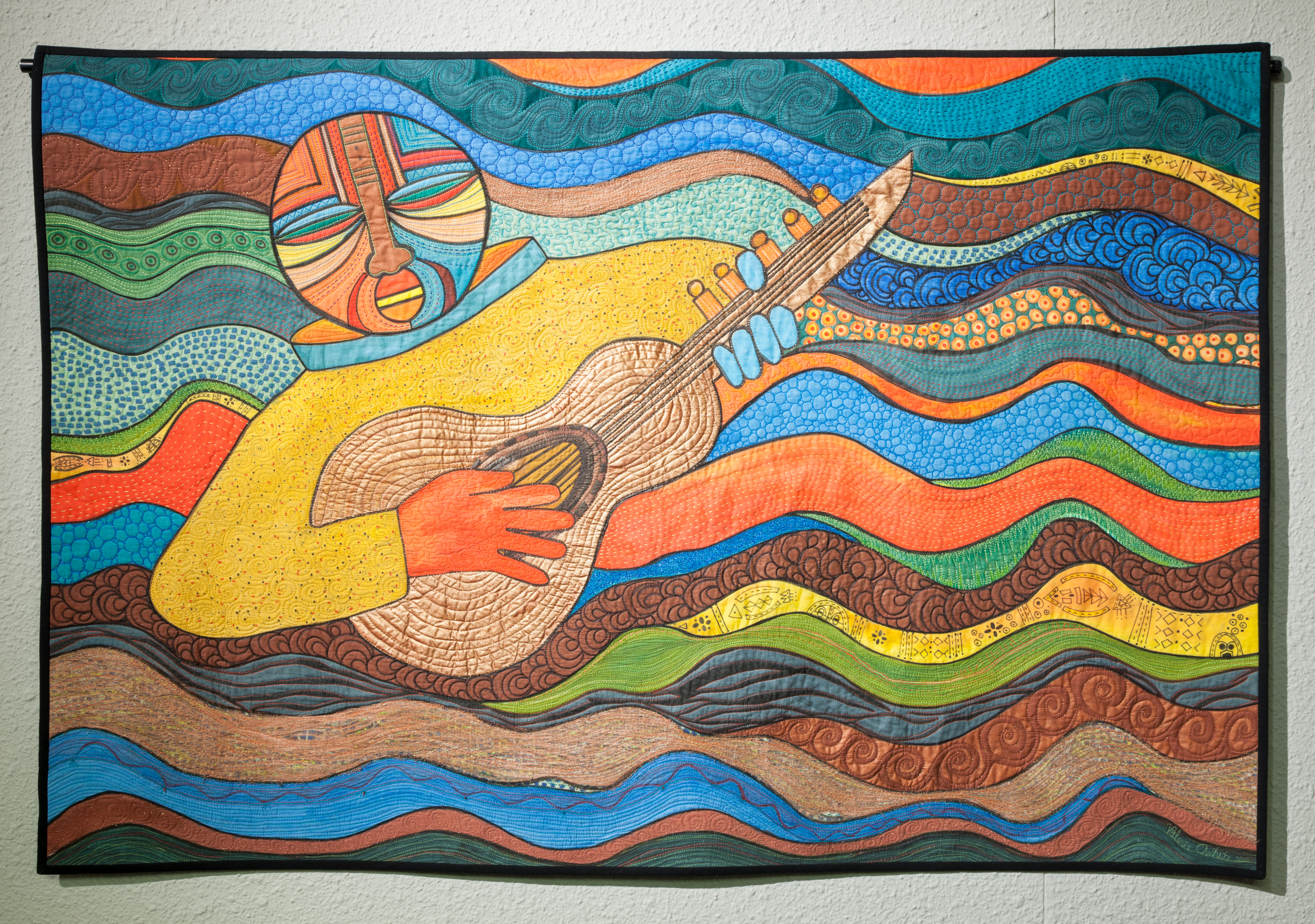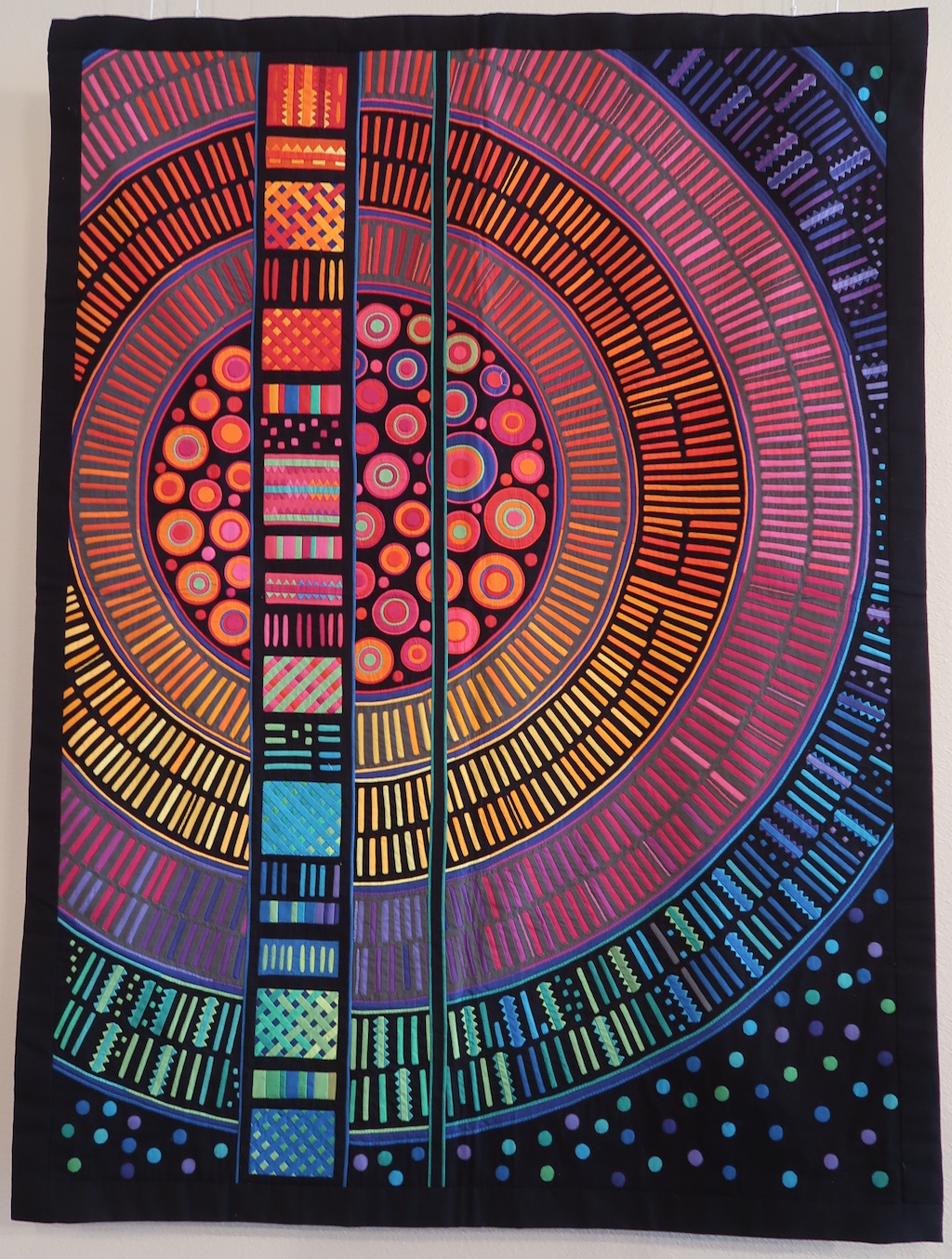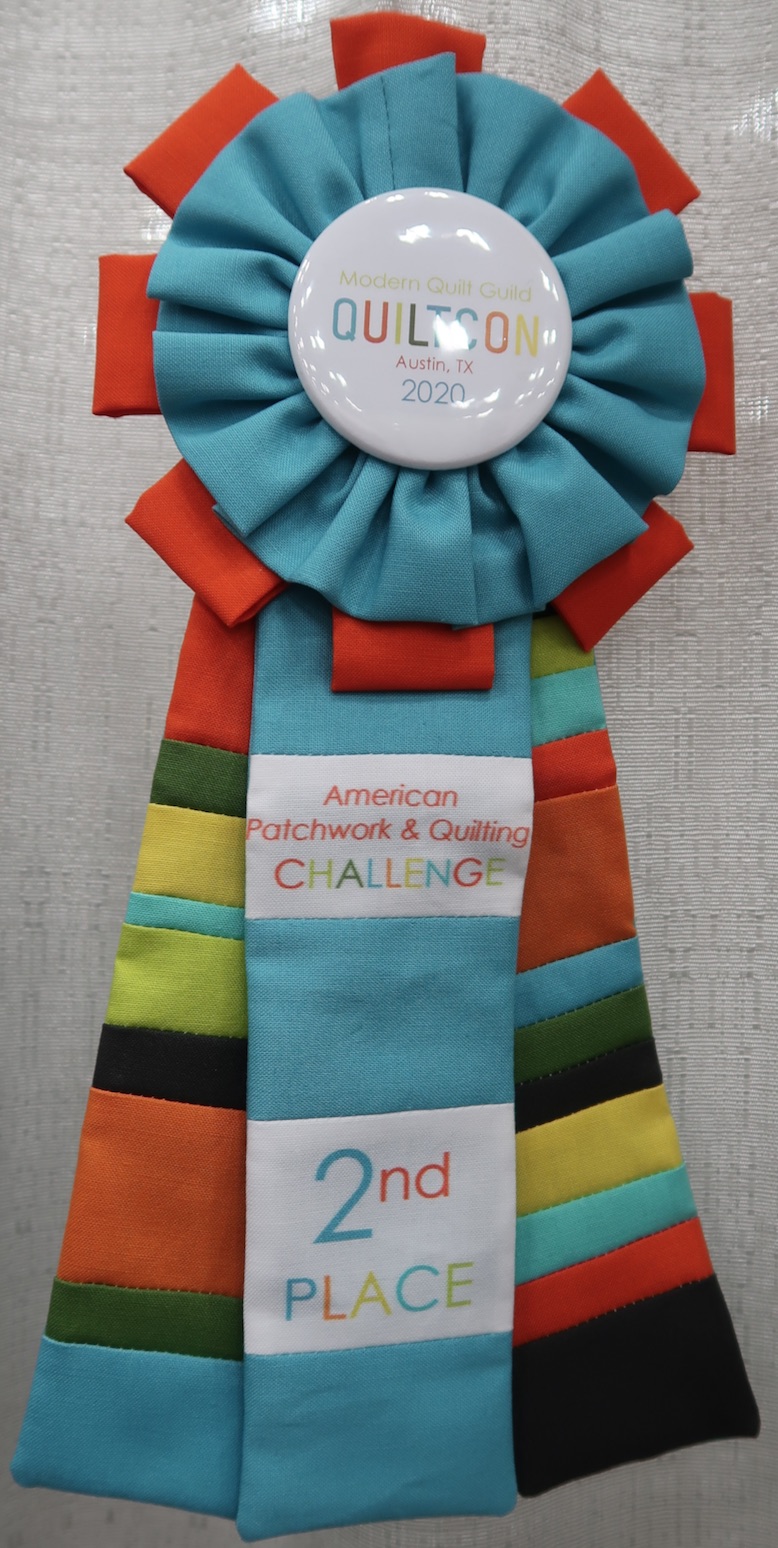 11
11
Three Easy Steps To Save This Lesson As A Pdf:
-Make sure you are logged in.
-Click on the small triangle next to the tool wheel in the upper right hand corner of the page (you'll find it above the Like button).
-Select the pdf. option. Wait a few minutes. It's a large file due to the number of images.
-Your file should appear with the title of the lesson.

Tree of Life by Debby Schnabel.
In this lesson, we continue to study how to include various types of texture in our work, other than with fabric alone. Think of texture in a quilt as the variety of ingredients that make an apple pie a delicious treat. While the spices of the filling enhance the apples, the flaky crust holds and offers a nice counterbalance. By incorporating a variety of different textures, your quilt, just like that tasty pie, will be more interesting and appealing to the viewer.
Using Tree of Life by Debby Schnabel (Show 1512: Enhance Your Quilting "Menu" with Hand Embroidery) as an example, let's examine the way she included various forms of texture in her work.

Smooth - Debby added clusters of smooth beads to the center of each large tree circle.
Shiny - The use of both metallic and glass beads add a bit of shine.
Hard - The red yo-yo's along the bottom mimic the rock or pebble-like fabric.
Rough - Her use of big stitch quilting adds a bit of rough texture, if you were you to run your hand across the quilt.
Woven - The fabric behind the tree features a woven pattern.
Furry - The tree background fabric looks to be flannel, which is a soft and almost furry feeling.
As you build a quilt, stop occasionally to consider these questions:
What story am I telling, if any?
What emotions am I trying to express (joy, chaos, calm, etc.), if any?
What is the title, and does it add to the understanding or meaning of the piece?
Are there areas that need something? Would it help to add a new item or a repeat of an already included element?
What if I rotate the piece? Do I like this perspective more?

Red Rocks Soil Study II by Valerie C. White.
Valerie C. White (Show 1508: Working with Intention - Expand Your Skills with Prayer Flags) shares how she includes texture when it comes to her work.
Texture by Valerie C. White
Emphasis
I am an academically trained artist. After years of practicing my craft I unconsciously begin a series or piece thinking about traditional design principals. That may not work for everyone. Many quilt artists rely solely on their own intuition for their design choices. Which is ok too however, if you continue to have composition issues, or problems with color, seek out a good book on design principals.
I feel strongly that the fiber arts community should expand their skill set by studying and reviewing art that is not fiber. Comparing and studying work of artists that embrace mediums other than fiber might be the catalyst needed and necessary to develop a better sense of design and successful work.

How Deep do your Roots Grow by Valerie C. White.
In the piece “How Deep do your Roots Grow” the bright polychromatic roots rest on a dark background. It is the light roots against the dark background that produces high contrast imagery, thus making the piece dramatic. My color palette is usually a complementary color scheme; I love the richness and depth that follows.

The repeated roots in my work suggest a relationship of unity and importance. Patterns are created when a design is repeated. For this series most of the roots were constructed using thermo fax screens.
Texture
Adding stitches either by machine or hand may be my favorite part of the quilting process. I use a variety of stitches to suggest and support the design elements. It’s one sure way of introducing a variety of textures on the quilt surface.


Juanita Yeager a successful quilter and teacher once said to me “ Quilt to express not impress” Rather than quilt using lines or motifs that are unrelated study your piece and ask your self: will the quilt stitch that I’m considering enhance the design? Is this texture in keeping with the theme of series?
My intention is to select stiches appropriate to the subject and composition. The erratic quilt lines in “How deep do you Roots Grow adds to the feeling of thin fragile roots.
Further more I suggest one should practice and audition quilting lines or designs before moving onto the work it self. I always have a quilt sandwich next to my machine to practice creating quilt lines that lend them itself to the work.
Practice Exercise:
Using a completed work of your own making, ask the following questions:
-
What do you notice first about the piece, and why?
-
What is the second thing you notice? Why?
-
What feelings do you get from the work? Why?
-
What were your were intentions? Do you feel that you achieved them?
-
If not, were the intentions not obvious or too obscure?
(From Questions in Learning Art by Marvin Bartel)
Click here for more topics related to The Art of Quilt Design program.














 '
'
















.jpg)


